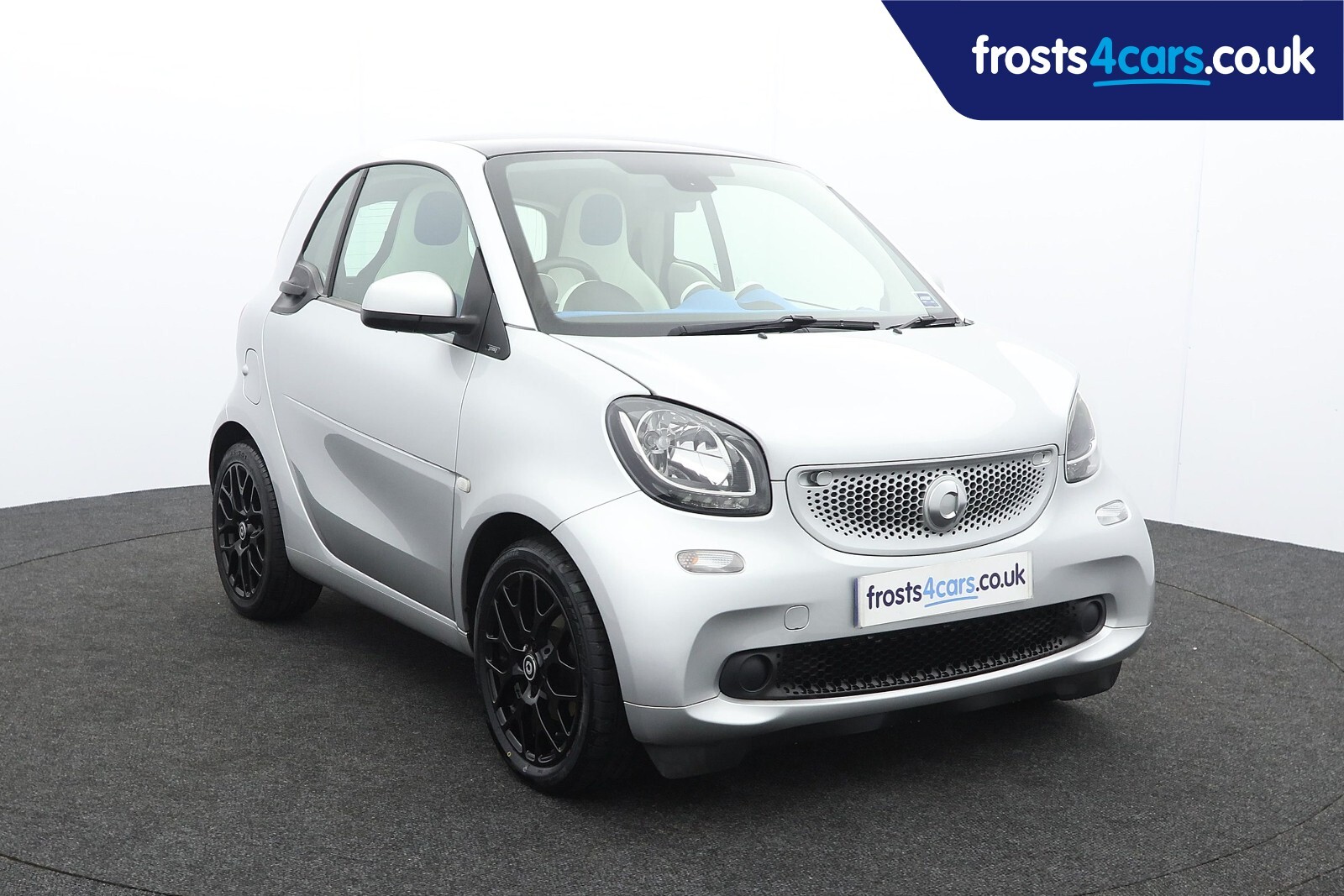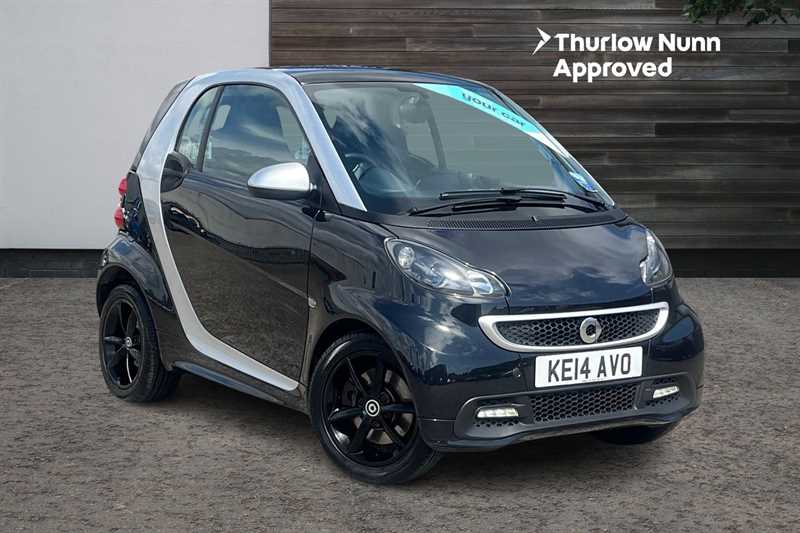Click for vehicles with £200-£700 cashback + free delivery
- Monday-Friday, 9am-5pm
- 020 3936 1257
- hey@heycar.co.uk
See what customers are saying
“Excellent”
Trustscore: 4.4/5
Copyright 2024 heycar - All rights reserved
Click for vehicles with £200-£700 cashback + free delivery

£8,295

£5,168
£9,897
was
£10,495
£700 off£7,995
was
£5,620
£290 offwas
£9,990
£370 offwas
£9,900
£500 off£7,527
£3,995
The Smart brand debuted at the end of the 1990s as an offshoot of Daimler, the company behind Mercedes-Benz. After some teething troubles they soon became a familiar sight in most European cities - not since the 1950s and 1960s had a company created a car so suited to clogged urban streets.
The third generation of Smart Fortwo debuted in 2014 and was this time developed in conjunction with Renault, whose third-generation Renault Twingo is very similar under the skin. Only Smart offered a two-seater though, and while it’s still an acquired taste, the company had worked hard to improve familiar Smart issues like its poor ride and jerky gearshift.
The Fortwo disappeared in 2021 after a couple of years sold only as an electric car. Early models are getting quite affordable now, but given the Fortwo’s unique size constraints, you may still be considering other city cars - the four-seat Smart Forfour, Fiat 500, Volkswagen Up, and Hyundai i10 are all worth a look.
It goes without saying that if you regularly carry more than just yourself or one passenger, then a two-seater city car like the Smart Fortwo may not be the most sensible choice. Likewise, if most of your trips tend to be on the longer side, then there are other cars - even other city cars - that make more sense.
But if you can live with the size, then there’s a lot to like about the Fortwo. In conjunction with the third-generation car’s tiny turning circle, the sub-2.7-metre length means parking the Fortwo is like activating a cheat code in a videogame. Some models have parking sensors but given you can turn around and touch the rear window, you’ll almost never need them.
While it won’t sneak through traffic like a scooter, the Fortwo’s narrow width still comes in handy too, giving you more room to breathe on narrow streets, while forward visibility is excellent, in part thanks to a driving position more like small SUVs than other city cars. And if you do get stuck in traffic, there are worse places to be than the surprisingly spacious, funkily-designed cabin.
The Fortwo’s size does have limitations. Compared to older Smarts, the ride and handling are a revelation, and Brabus models are even quite good fun, but against more conventional city cars, it’s still a little jiggly and doesn’t instil the driver with much confidence, and despite a crosswind assist function for the stability control system, the Fortwo can still get pushed around on windy days.
If you’re still on board, then the earliest Fortwos are getting quite affordable, though you’ll still pay a pretty penny for a Brabus or the electric models. Others to consider are the larger Smart Forfour and its Renault Twingo cousin, and if the Smart’s style catches your eye, then the ageing but chic Fiat 500 is another alternative. For something less stylish but more sensible, consider the Volkswagen Up, or Hyundai i10.
A Smart Fortwo not for you? We've got 1000s of used cars for sale to suit all budgets and needs.
The smart move (no pun intended) is to pick the 90hp engine, as it’s barely less economical than the non-turbocharged model but has significantly better performance, and gives you a little more in hand for longer journeys where the entry-level car can start to feel a bit more out of its depth. Follow this logic further and the Brabus is even better, but it’s also a lot more expensive and its ride quality is notably firmer, which won’t be for everyone.
Steer clear of Pure models, which are a little short (again, no pun intended) on equipment, and instead aim for Passion or above, for the standard air conditioning and the more inviting fabric-trimmed dashboard if nothing else. The heated leather seats of the Prime add to the upmarket small-car ambience, too.
The Smart Fortwo was offered in a wide range of trim levels, and that doesn’t even get into the special editions - a quick but inconclusive rundown of those includes the Edition 1, Edition Black, Edition White, Edition Red, Edition Blue, Urban Shadow, Disturbing London, and the EQ Edition Bluedawn and Nightsky. Most are simply colour packs with one or two trim and equipment differences to the models on which they’re based. A sporty Proxy’ trim was also available for a time, sitting between the Passion and Prime models.
The Smart Fortwo’s dimensions are:
The Smart Fortwo’s boot size is:
Electric models don’t currently attract any VED or ‘road tax’, and if you pick either a 71PS or 90PS model registered before April 2017, then thanks to CO2 ratings below 100g/km, those also enjoy zero-rate VED. Even the Brabus will only cost £20 a year in tax before this date. For the handful of models registered after April 2017, you’ll pay significantly more, with a yearly bill of £180.
Smart Fortwo insurance shouldn’t cost you very much at all. The 71PS petrol models sit in just group 3 out of 50, and even the turbocharged 90PS models are only in group 8 and 9, depending on trim level. The Brabus starts in group 11, while a Smart EQ Fortwo in Premium trim is a little lower, in group 10. For comparison, the most basic Volkswagen Up begins in group 2, rising to group 17 for a GTI, while like the EQ Fortwo, the electric Volkswagen e-Up sits in group 10.
Read our full Smart Fortwo review
What is the most popular colour for Smart Fortwo Coupe ?
What is the most popular gearbox for Smart Fortwo Coupe ?
What is the most popular fuel type for Smart Fortwo Coupe ?
What is the most popular engine for Smart Fortwo Coupe ?
What is the average mileage for Smart Fortwo Coupe ?
32300
How many Smart Fortwo Coupe cars are available for sale?
10